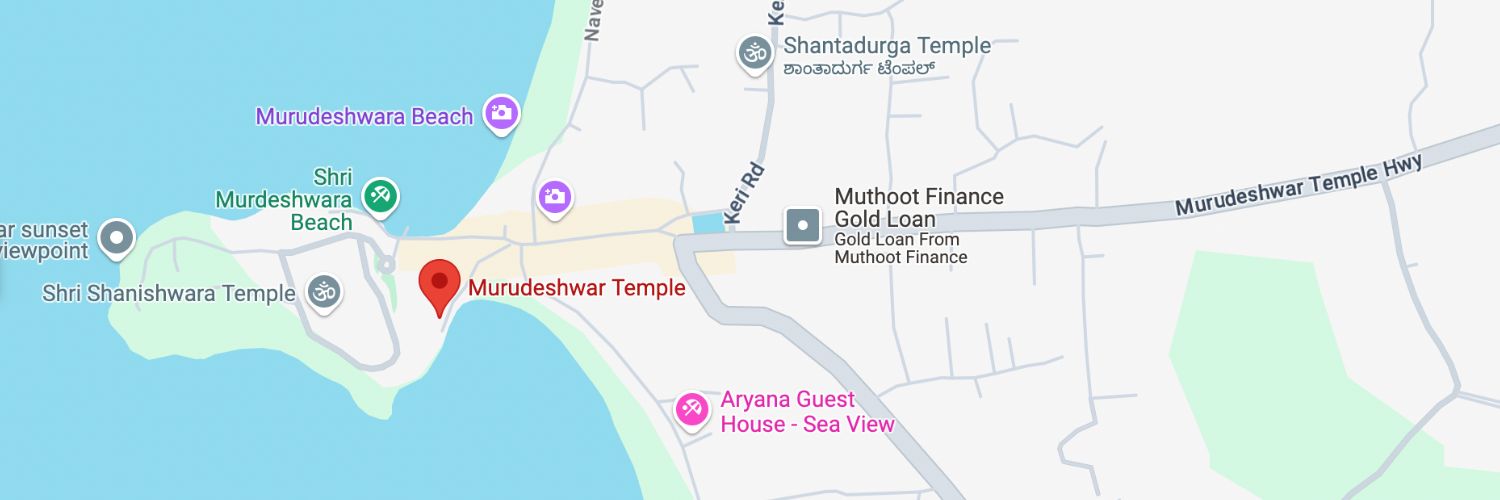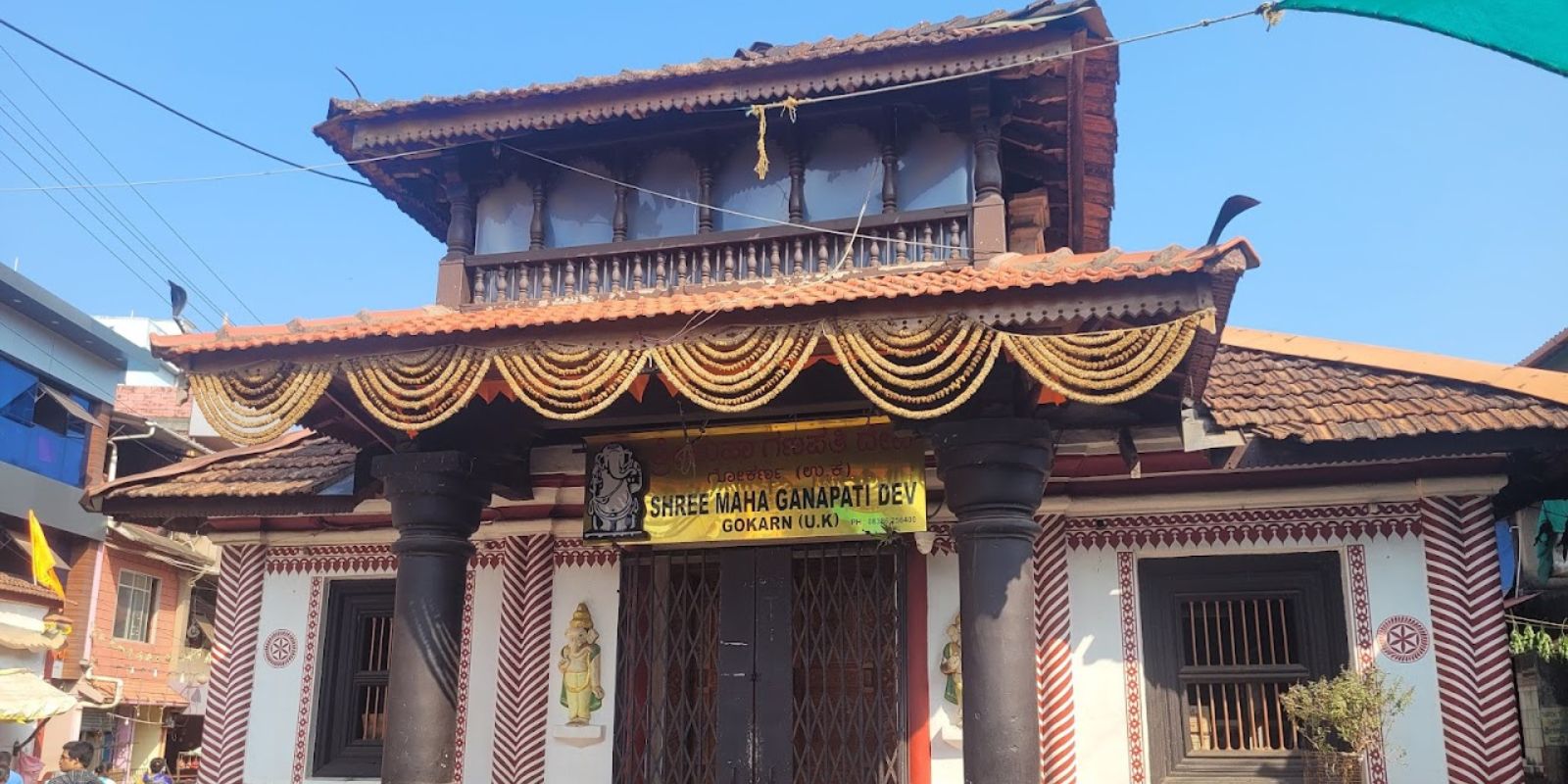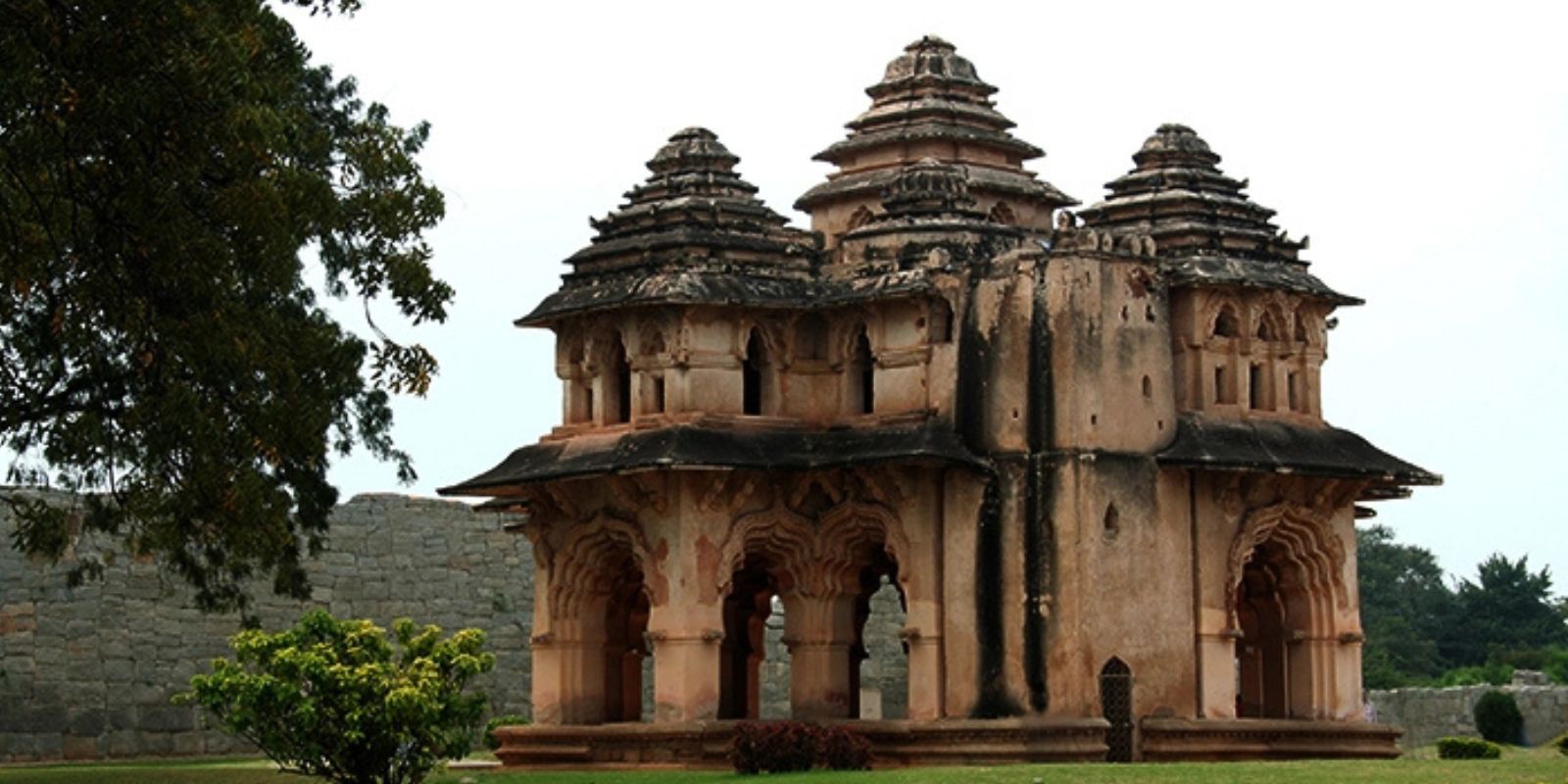Perched on a rocky hill by the Arabian Sea, Murudeshwar Temple is one of Karnataka’s most iconic spiritual landmarks. Though distinct from Gokarna town, it lies just 80 km north, making it a must-visit for pilgrims in the region. The temple is dedicated to Lord Shiva, and the massive 123-feet Shiva statue behind it is the world’s second tallest. The temple complex combines architectural beauty with natural grandeur—waves crashing below, a towering gopuram, and faith flowing through every corridor.
Noteworthy Attractions
18-Storey Raja Gopuram
Ride the lift to the top of this towering gateway for unmatched aerial views of the temple, sea, and coastline.
Cliffside Sanctum View
The inner shrine, with its sea-facing location, offers surreal moments of prayer amidst crashing waves.
Sculpture and Garden Complex
The temple grounds include mythological sculptures, manicured gardens, and open meditation areas for quiet contemplation.
History & Culture
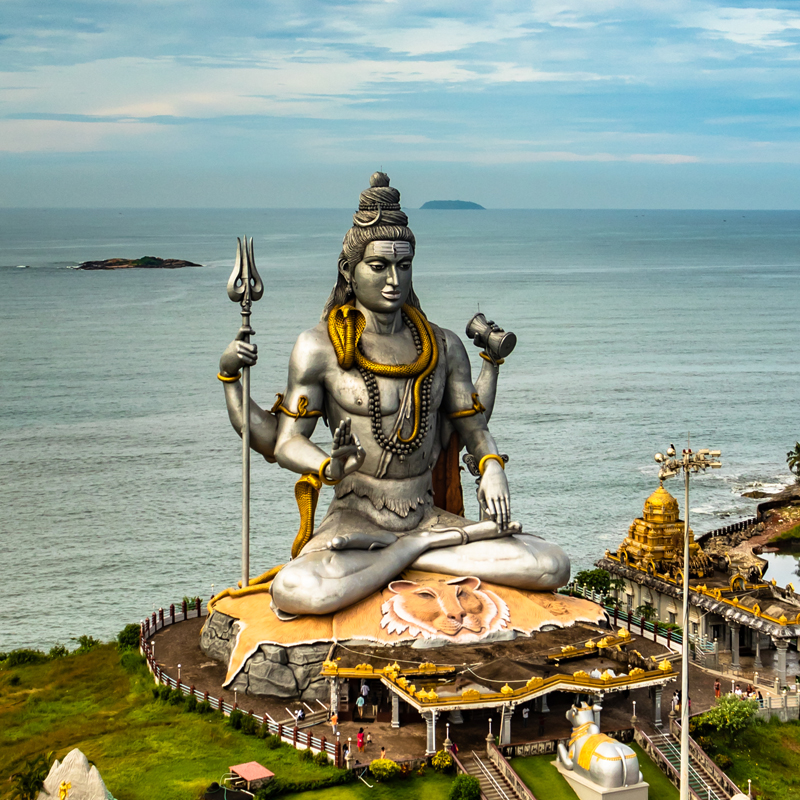
Origins & Legacy
Murudeshwar’s legend is deeply linked to the tale of the Ātmaliṅga. After Ravana dropped the Ātmaliṅga at Gokarna, a fragment is believed to have fallen here—giving the site its sacred status. The current temple was developed in the 20th century with major contributions from businessman-philanthropist R. N. Shetty, who funded the statue and the modern structures that now form the complex.
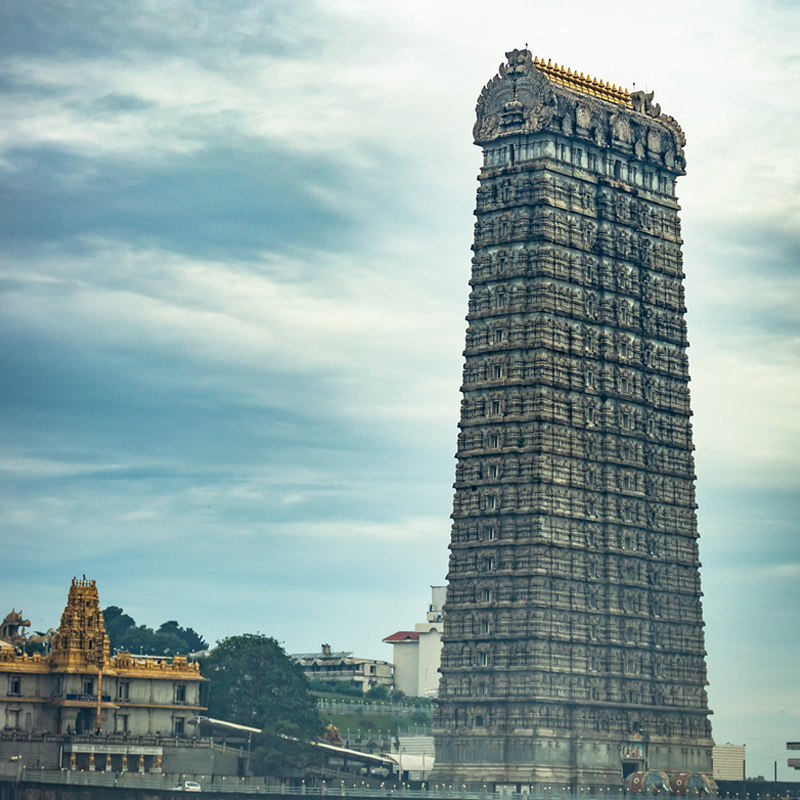
Sacred Importance
Dedicated to Lord Shiva, Murudeshwar Temple is seen as part of the larger narrative of the Ātmaliṅga. While it’s not home to the Ātmaliṅga itself, it is revered for its symbolic connection. Devotees come to offer prayers for strength, clarity, and release from worldly attachments. Maha Shivaratri and Karthika Deepa are especially vibrant here, with night-long prayers and cultural performances.
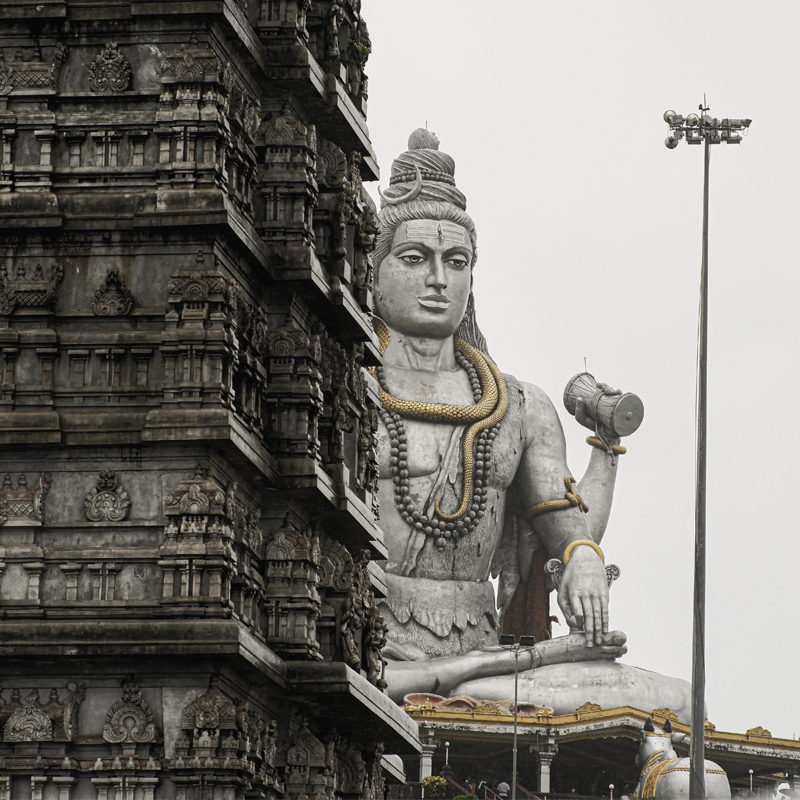
Rituals & Traditions
- Daily abhisheka and ārati in the sanctum, especially powerful during sunrise.
- Devotees offer tulsi leaves and flowers at the main altar.
- Climbing the gopuram is considered a symbolic ascent toward spiritual insight.
- Pilgrims meditate on the sea-facing platforms after darshan.
Practical Guidance
When to Go
October to March offers pleasant weather and clear views. Maha Shivaratri (Feb/March) is the peak spiritual period, drawing thousands. Summers can be hot; monsoons are dramatic but wet.
Respect & Reverence
Guidelines
-
Wear modest clothing—no shorts or sleeveless tops.
-
Silence is appreciated during rituals. Footwear must be left outside temple zones.
Restrictions
-
Photography is strictly prohibited inside the sanctum.
-
Avoid littering or bringing non-vegetarian food or plastic inside the temple complex.
Arriving Here
By Air
The nearest airport is Mangalore (approx. 155 km). Pre-booked taxis and buses are available for onward travel.
By Rail
Murudeshwar Railway Station is 2 km from the temple. It is well-connected via the Konkan Railway line with key coastal cities.
By Road
Located on NH-66, Murudeshwar is accessible from Karwar, Gokarna (80 km), and Mangalore. Buses and cabs operate regularly.
Immersive Experiences
Spiritual Practices
Join the Rudrābhiṣeka rituals or meditate at dawn facing the Arabian Sea after morning temple bells.
Local Rituals
Light ghee lamps at sunset near Kotiteertha, mirroring age-old traditions of invoking divine light into one’s life.
Workshops & Courses
Nearby ashrams offer short classes in yoga, Vedic chanting, and Ayurveda, blending temple visits with holistic spiritual exploration.
Closing Reflection
Mahabaleshwar Temple in Gokarna offers not just divine darshan but a deeper connection with timeless spirituality. The sea whispers legends, and the liṅga radiates peace.

